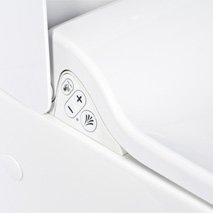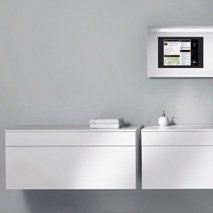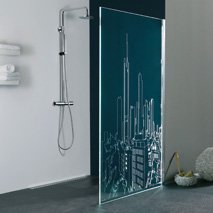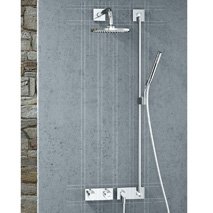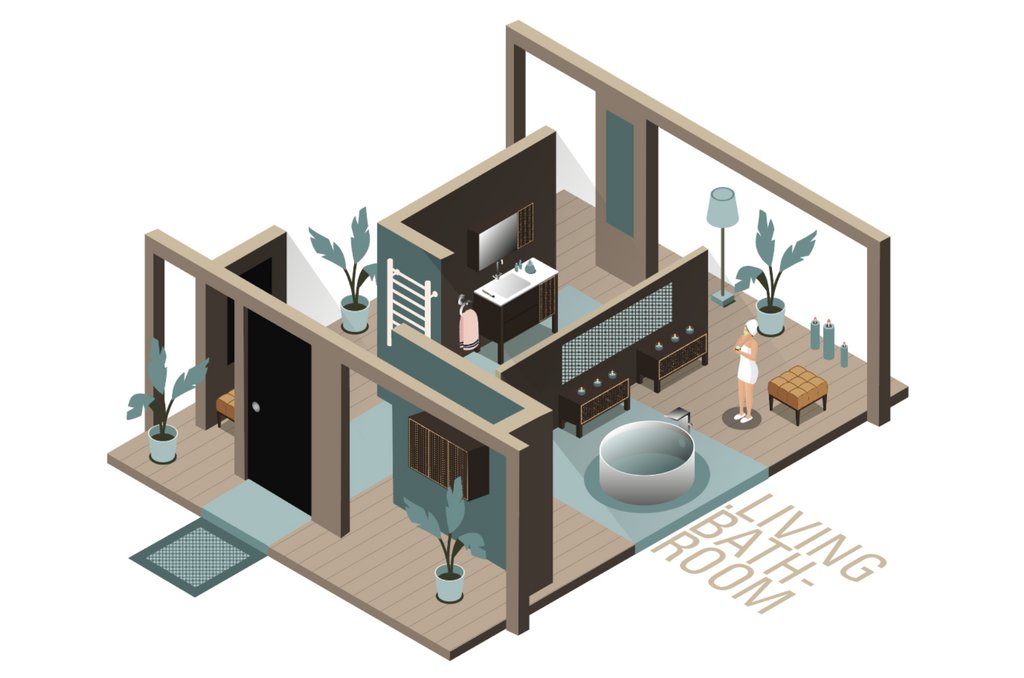When it comes to usage, other aspects are uppermost: asked about their ideal bathroom of the future, people oft en say they would like to have access to the outdoors or at least bring air and natural elements inside. Air and light are important themes which, in the Green Bathroom, are interpreted as opening the bathroom up towards the outdoors. Architecturally speaking, this represents a fascinating task, especially in new builds: the bathroom as access and as a link between the indoor and outdoor worlds.
Another key, consumer-driven aspect is userfriendliness in the sense of a multigenerational or cross-generational bathroom. These days nobody wants to end up in a retirement home. People would much rather have a smart new bathroom with a wellness tub, a comfy bench and a big, modern walk-in shower (which is, by the way, the most ingenious invention of all for the young, the old and people with high design standards), and there are even those who dream of a vanity table complete with big mirror.
More and more people are coming to realise that it is their bathroom that will eventually decide whether or not they can live a self-determined life well into old age. What people will be looking for in future is therefore a bathroom that can satisfy the needs of all diff erent kinds of users - Universal Design is the keyword here. An "Easy Bathroom" based on the idea of a multigenerational bathroom is simple, practical and timelessly attractive, a room for everybody, from toddlers all the way to seniors. Disabilities, whatever their nature, should not be the prime concern when planning a bathroom. Instead, the ultimate goal is to omit anything that would discriminate against certain individuals. It is the art of reduction that makes the diff erence. A market with a future.
The digital bathroom: a private spa as if by magic In the bathroom, design is entering into an ever stronger symbiosis with technology and digital elements. Th e main argument for digitising the bathroom is enhanced convenience. LED technology has already shown us just how much of an impact modern technical equipment can have on the aesthetic quality of the bathroom too, not to mention sensory qualities and safety aspects. But even multimedia enter tainment is now taking up residence in the former wet room - which isn't actually that wet at all any more.
Whenever water and electricity are meant to come together in the bathroom, however, the DIN standards often raise objections. It's just too dangerous to have openly accessible power connections in Safety Zone 1, i.e. in the immediate vicinity of open water sources. As a result, recessed speakers in the ceiling and a whirlpool bath equipped with underwater fl oodlights were for a long time the only form of luxury possible in the digitised bathroom. But then, with the advent of low voltage technology (12V), the "water and electricity" relationship started to progress. In this respect, we are at the beginning of a dynamic development that will lead to the all-embracing digitisation of the bathroom. Nowadays, electronically controlled fittings that ensure the right water temperature at the push of a button and storable bespoke programmes in the shower are more than just wishful thinking. Technology is taking up residence in the bathroom so as to make life easier for its users. At the same time, the emotional staging of water and light also plays a very important role. But it has to be simple - aft er all, real life is hard enough.


